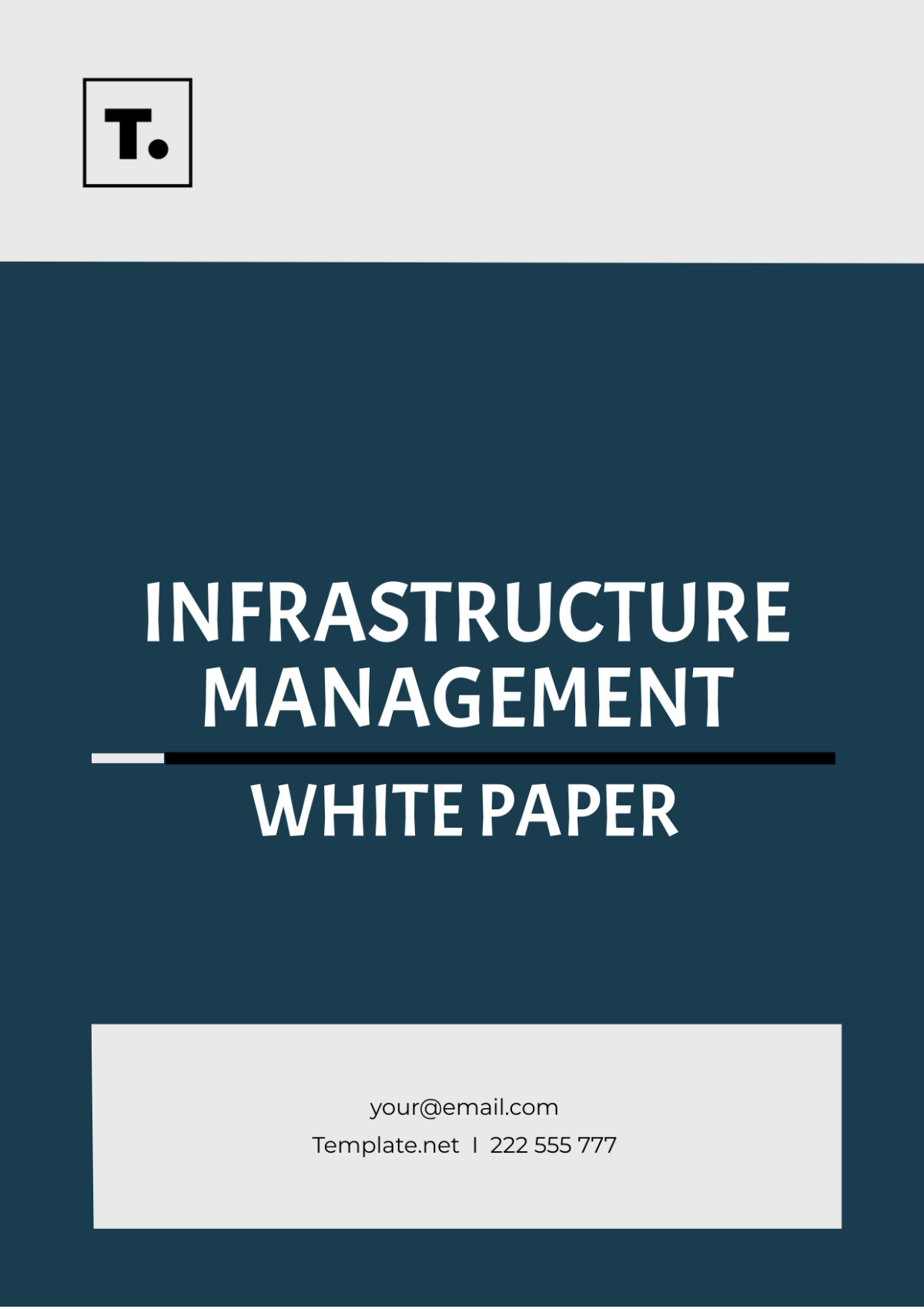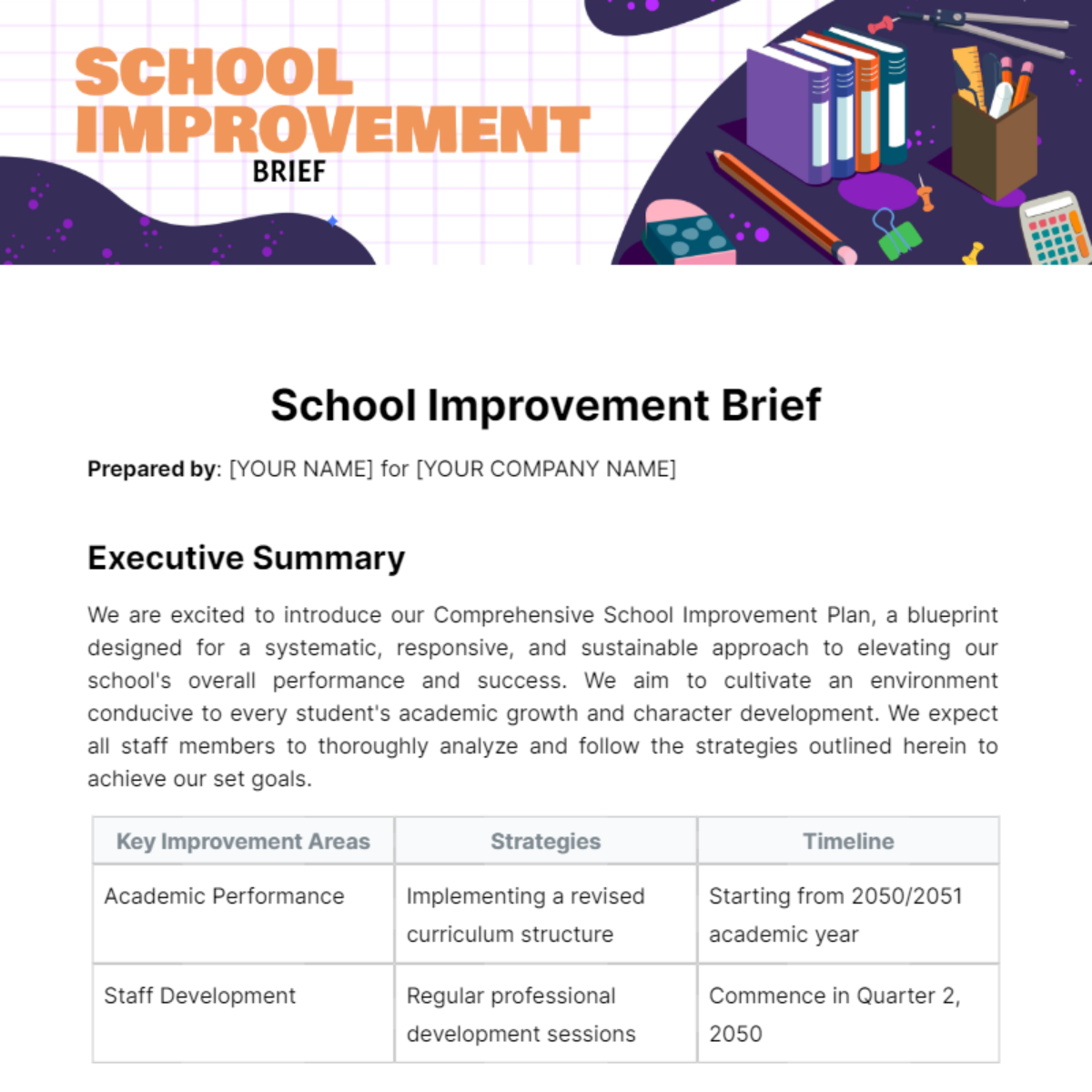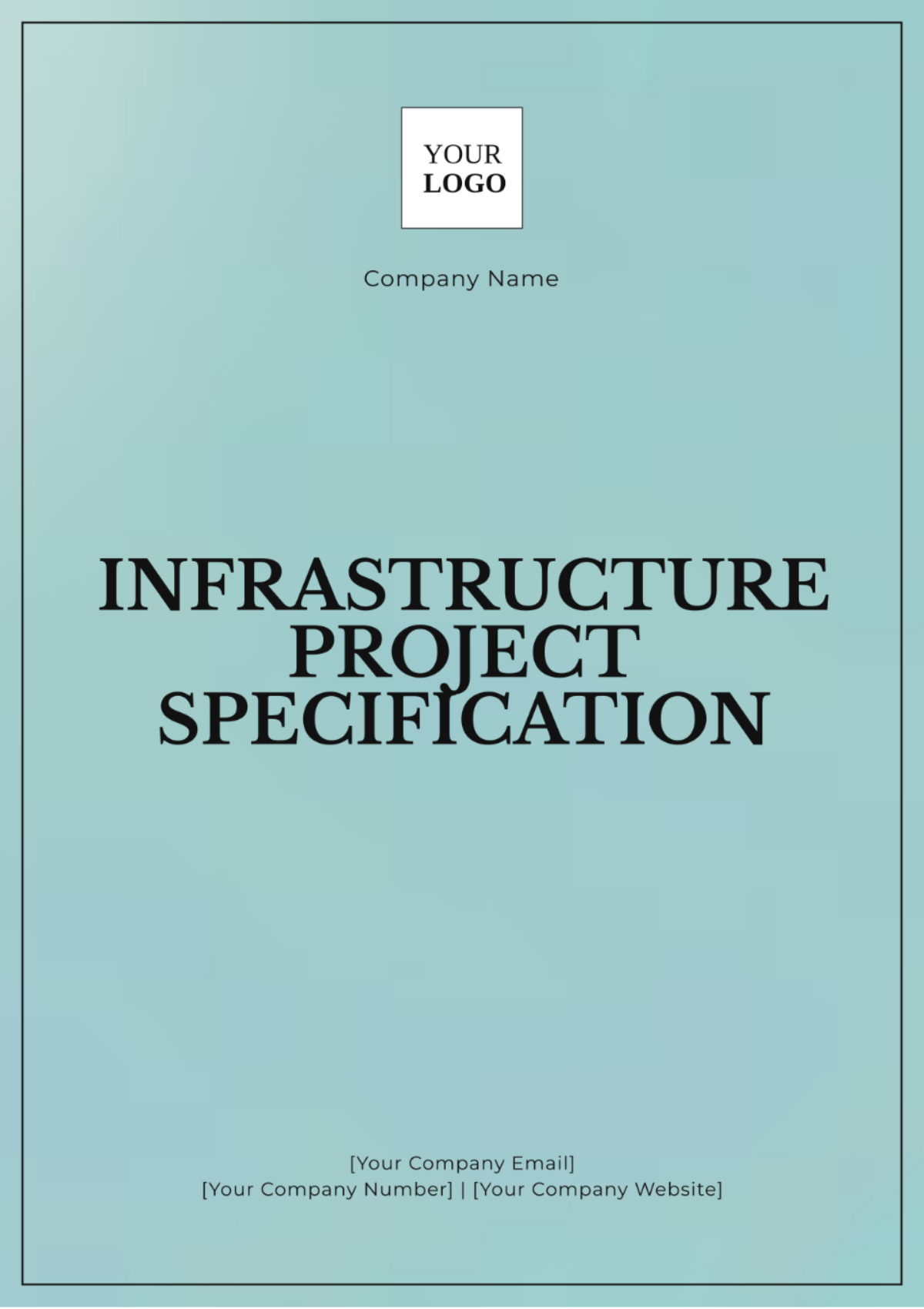Infrastructure Project Specification
Prepared By: [YOUR NAME]
Date: [DATE]
I. Introduction and Overview
The Infrastructure Project Specification document outlines the requirements, standards, and criteria for the design, construction, and maintenance of this Infrastructure Project. The objective of this project is to deliver a state-of-the-art infrastructure system that meets the current and future needs of the community while adhering to all applicable regulations and best practices. The scope of the project includes the planning, design, construction, and maintenance of roads, bridges, drainage systems, utilities, and other essential infrastructure components.
II. Technical Requirements
A. Materials
High-Strength Concrete: It possesses a minimum compressive strength of 4000 psi, is engineered for durability and load-bearing capacity, and is resistant to weathering, chemical attack, and wear.
Reinforcing Steel: Minimum yield strength of 60,000 psi, ensuring structural integrity and longevity, with corrosion-resistant coating if required.
Asphalt Mixtures: Must adhere to ASTM D3515 standards to guarantee superior performance in load distribution, durability, and environmental resistance.
HDPE Pipes: HDPE pipes offer a century-long service life and outstanding resistance to corrosion, chemical exposure, and leaks.
B. Methods
Building Information Modeling (BIM): Employ BIM for advanced design and planning, enabling efficient coordination, visualization, and integration of all project elements, facilitating clash detection and project management.
Laser Scanning Technology: Employ laser scanning technology for precise topographic surveys and site analysis, acquiring detailed 3D data to improve accuracy in design and construction workflows.
Prefabrication Techniques: Implement prefabrication for bridge components to improve construction efficiency, quality control, and safety while reducing on-site construction time and disruption.
High-Precision GPS: Apply high-precision GPS technology for accurate construction layout and alignment, ensuring adherence to design specifications and reducing potential errors in placement.
C. Performance Criteria
Criteria | Requirement |
|---|---|
Pavement Roughness | Maintain pavement roughness below 120 inches per mile IRI (International Roughness Index) to ensure a smooth and comfortable driving surface, minimizing vehicle wear and maintenance needs. |
Bridge Load Rating | Design bridges to exceed AASHTO LRFD (Load and Resistance Factor Design) Bridge Design specifications, providing superior load-bearing capacity, safety, and structural performance. |
Drainage Systems | Ensure drainage systems are capable of handling a 100-year storm event, incorporating robust design elements to manage high volumes of runoff and prevent flooding. |
Utility Systems | Design utility systems with a minimum operational lifespan of 50 years, ensuring reliability, minimal maintenance, and resilience to environmental and operational stresses. |
III. Design Criteria
Design Aspect | Requirement |
|---|---|
Roadway Design | Adhere to AASHTO standards to ensure optimal safety, performance, and durability. |
Bridge Design | Follow AASHTO LRFD Bridge Design Specifications for structural integrity and load-bearing capacity. |
Drainage Design | Comply with local stormwater management guidelines to manage runoff effectively and mitigate flood risks. |
Utility Design | Conform to industry standards and local codes for reliability, safety, and operational efficiency. |
IV. Construction Methods
The upcoming project will employ a variety of construction techniques and procedures, including planning, execution, monitoring, and completion. Here are the specific processes and methodologies that will be used:
Site Preparation: This involves clearing vegetation and debris, leveling the land, and preparing the site for construction.
Foundation Construction: For a solid foundation, incorporate driven piles and drilled shafts to guarantee durability and support.
Superstructure Erection: Utilize prefabricated components to significantly improve both the efficiency and the overall quality of the construction or manufacturing process.
Paving: Make use of hot mix asphalt along with roller-compacted concrete to create surfaces that are both durable and exhibit high performance.
V. Quality Assurance
To ensure the project's integrity and durability, the following quality control measures will be implemented:
Site Inspections: Conduct regular inspections by skilled QA and QC professionals to ensure standards adherence and assess product and process quality.
Material Testing: Conduct thorough tests in accredited laboratories to ensure that the material specifications and performance align with the required standards and expectations.
Non-Destructive Testing (NDT): Utilize non-destructive testing (NDT) methodologies to evaluate the condition and integrity of structural components in a manner that does not inflict any harm or damage upon them.
ISO 9001 Compliance: Adhere to ISO 9001 quality management standards to ensure consistent and high-quality processes.
VI. Safety and Environmental Standards
A. Safety Protocols
OSHA Compliance: Adhere strictly to OSHA safety standards to ensure a safe work environment, including regular audits and inspections to maintain compliance and address any potential hazards.
Mandatory Safety Training: Provide comprehensive safety training for all project personnel, including onboarding sessions and ongoing education, to equip them with the knowledge to identify and mitigate risks.
Personal Protective Equipment (PPE): Ensure the use of appropriate PPE at all times, including helmets, gloves, eye protection, and safety footwear, tailored to specific job tasks and potential hazards.
Site-Specific Safety Plan: Develop and implement a detailed site-specific safety plan, addressing unique risks and conditions of the project site, and regularly review and update the plan as needed.
B. Environmental Considerations
EPA Compliance: Comply fully with EPA regulations, including obtaining permits and following pollution prevention guidelines.
Eco-Friendly Materials and Methods: Use eco-friendly materials and methods to minimize the project's environmental impact by choosing low-impact materials and optimizing processes to reduce waste.
Waste Management and Recycling: Implement a comprehensive waste management and recycling program to minimize construction waste, including segregation of recyclable materials and proper disposal of hazardous substances.
Erosion and Sediment Control: Use silt fences, sediment basins, and erosion control blankets to prevent soil erosion and manage runoff during construction.
VII. Regulatory and Compliance Requirements
The project must adhere to all relevant codes, regulations, and standards to ensure legal and operational compliance:
Federal Highway Administration (FHWA) Guidelines: Follow FHWA guidelines for infrastructure projects to ensure alignment with federal requirements and best practices in highway design, construction, and safety.
American Society of Civil Engineers (ASCE) Standards: Ensure that all design, construction, and engineering activities adhere to ASCE standards for civil engineering to meet established industry benchmarks for quality and performance.
Local Building and Safety Codes: Comply with local building and safety codes to address region-specific requirements and ensure that construction practices meet community safety and quality standards.
State and Local Environmental Regulations: Adhere to state and local environmental regulations to manage environmental impact, including compliance with land use, pollution control, and conservation regulations.
VIII. Project Schedule and Milestones
This section defines the key timelines and deadlines essential for the project's successful completion.
Milestone | Deadline |
|---|---|
Project Kick-off | January 15, 2050 |
Completion of Design | June 30, 2050 |
Start of Construction | August 1, 2050 |
Project Completion | December 31, 2051 |
IX. Budget and Cost Estimates
Developing a thorough financial strategy is crucial for the success of this Infrastructure Project, which has an estimated budget of $50 million. The following table details the projected costs by category.
X. Maintenance and Operation
This section outlines the maintenance requirements and operational guidelines post-construction.
Routine Inspections and Maintenance: Conduct inspections and maintenance biannually to keep infrastructure in peak condition and promptly resolve any issues.
Component Replacement: To prevent failures and extend the lifespan of the infrastructure, replace worn or damaged components as necessary, prioritizing replacements based on the severity of the condition.
Maintenance Management System: Implement a maintenance management system to monitor inspections, upkeep, and repairs, aiding in efficient planning and record-keeping.
Operational Staff Training: Provide ongoing training to operational staff on maintenance procedures, safety, and emergency responses, incorporating updates and best practices.




